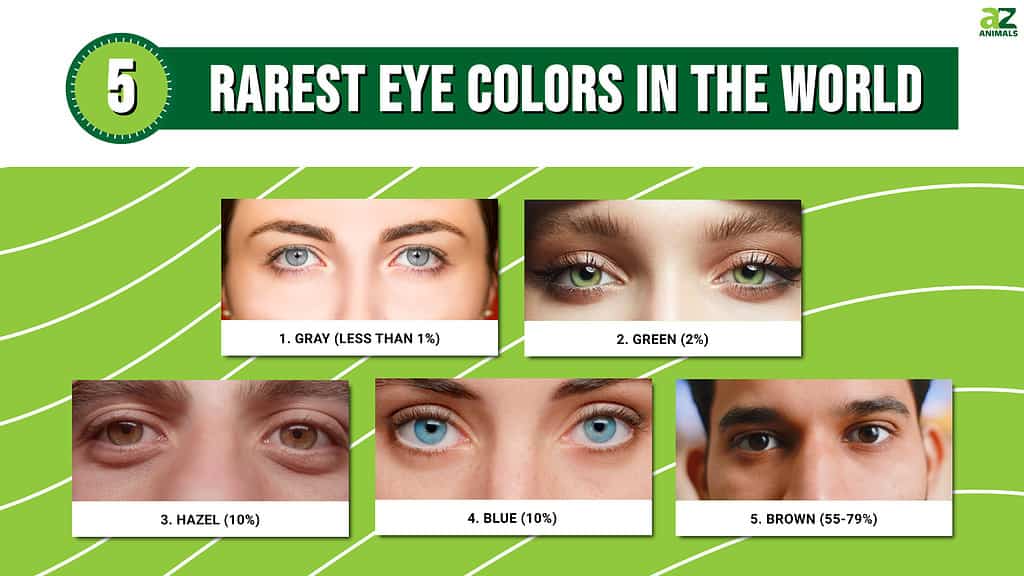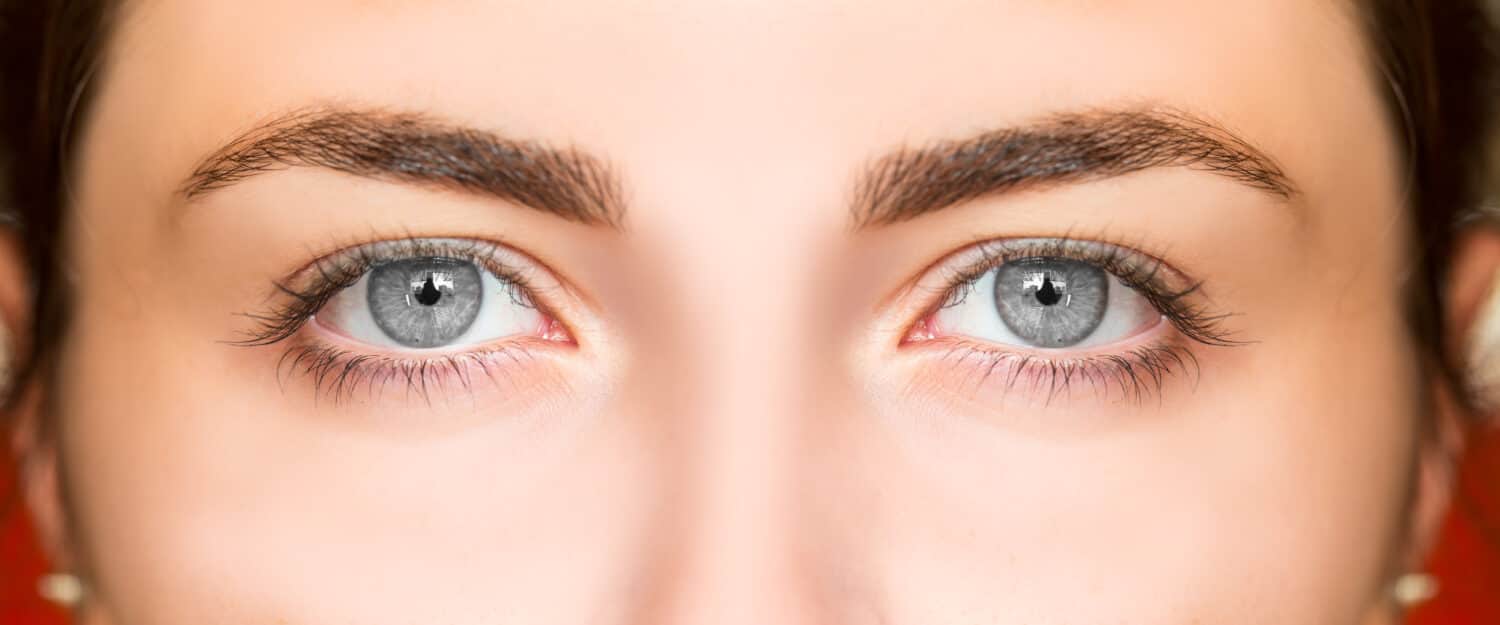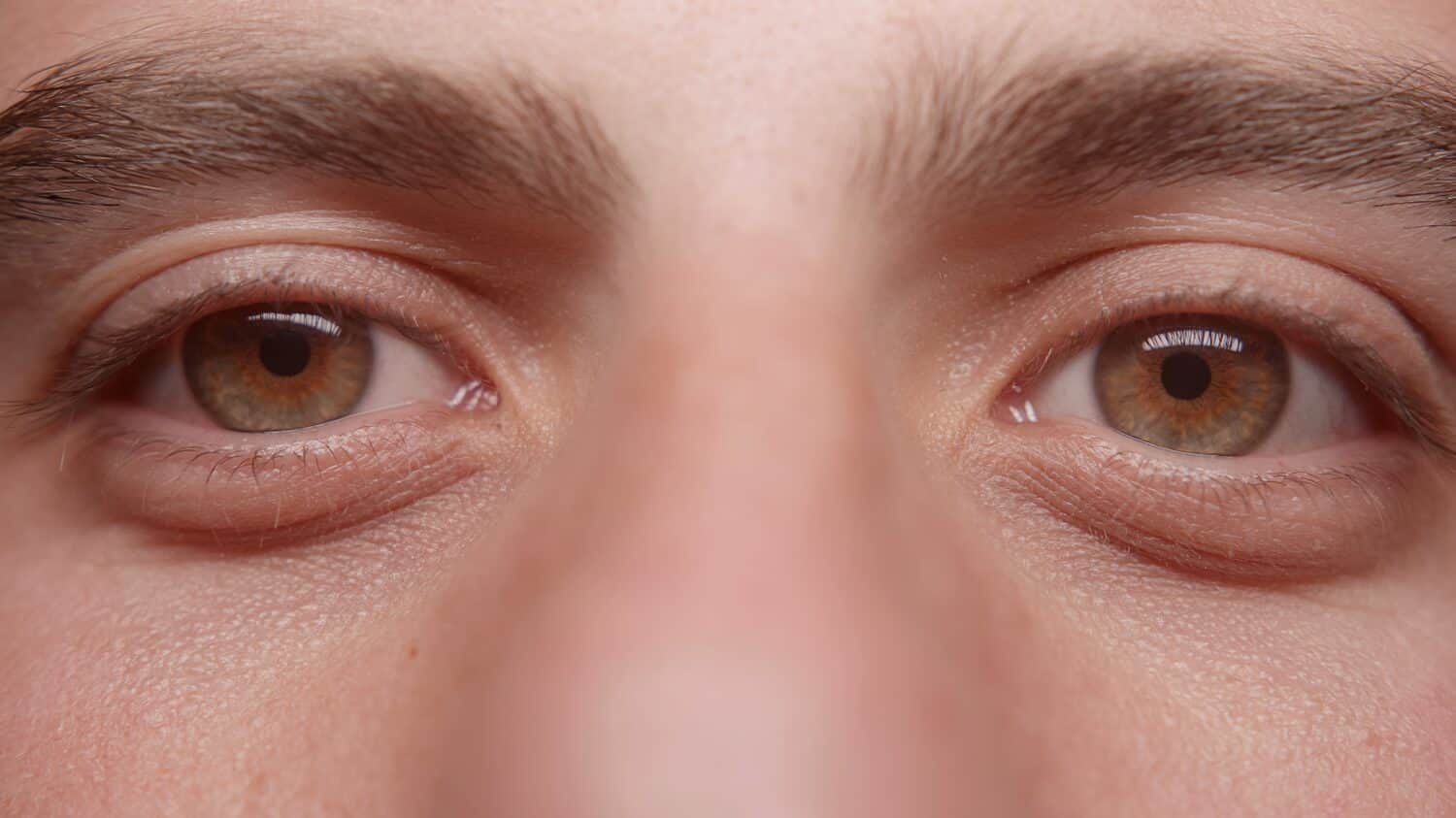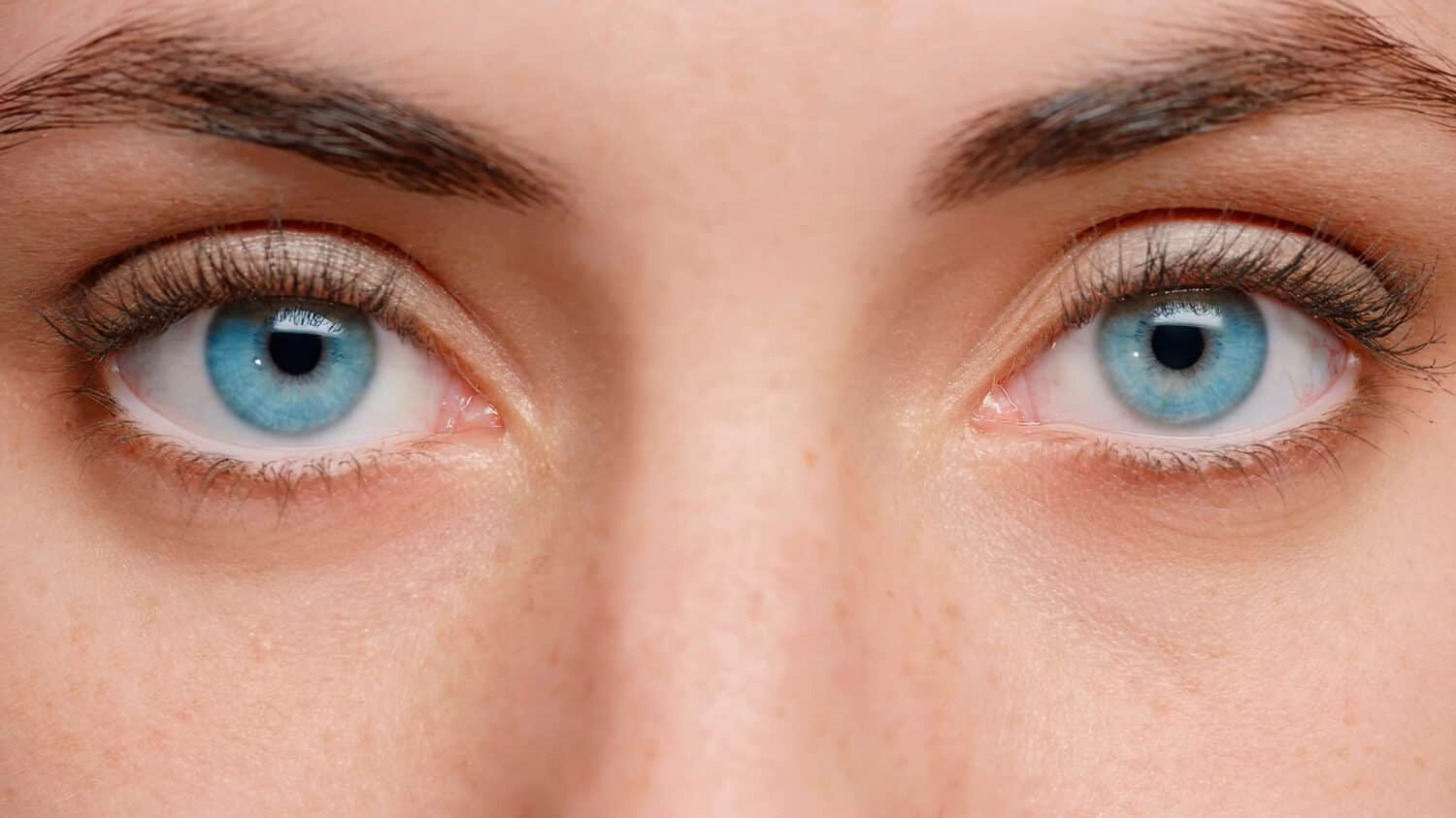
They call them windows to the soul because of how revealing they are. But they don’t just tell you about a person’s inner world. They also tell you a bit about their genetics. Discover the rarest eye colors in the world!
1. Gray
Less than 1% of the world’s population has gray eyes. Different ethnic groups and geographical areas influence the variations of it. How this color occurs is not entirely understood. Lighting plays a role in how intense this color appears. Sometimes those with gray eyes have a bluish-gray or smokey gray tint in their irises. These eyes are more common in people from northern and eastern Europe.

Less than 1% of the world’s population has gray eyes.
©muratart/Shutterstock.com
2. Green
Green eyes exist in around 2% of the global population. These are more common in some European countries such as Iceland and Ireland. The chance of having green eyes decreases in people with other ethnic backgrounds. Though it is rare, it still happens. The green color comes from a lack of melanin in the iris, allowing light to display and create the appearance of green.

2% of people in the world have green eyes.
©Eugene Partyzan/Shutterstock.com
3. Hazel
10% of the world’s population has hazel eyes, and experts believe it comes from a combination of orange, green, and gold. Sometimes hazel eyes have kind of an amber color, so hazel and amber are often grouped together. People that have these eyes mostly come from places like Brazil. Those with Spanish heritage and those from the middle east are more likely to inherit this eye color. There are several hazel variations. For example, there is gray hazel, blue hazel, brown hazel, green hazel, golden hazel, and even multicolored hazel which is just as mesmerizing as it sounds!

10% of the world’s population has hazel eyes.
©Mahir KART/Shutterstock.com
4. Blue
Blue eyes are less common compared with other eye colors; the world population of those with blue eyes is about 8 – 10%. An important genetic factor to remember is that in order for the offspring to have blue eyes, both parents have to have the genes. Countries with the most blue-eyed people include Denmark, Estonia, and Sweden. Like with hazel eyes, there is a variation of blue as well. There is pale blue (also known as sky blue), and the variations continue to shades that are a bit more concentrated such as gray blue or even intense turquoise. Again, the surrounding light aids the variation, making blue eyes appear darker or lighter.

8 – 10% of the world’s population has blue eyes.
©sashamol/Shutterstock.com
5. Brown
Brown eyes are the most common throughout the world. People that have these colored eyes make up between 55 to 79% of the population. The higher the levels of melanin, the darker brown eyes the offspring inherits. Lower levels of melanin result in lighter eyes being passed down to the offspring. This color is considered a dominant trait, which means that if only one parent has brown eyes, that variation is sufficient to pass it on. People with brown eyes are mostly African, Asian, Native American, and have Hispanic heritage.

55 – 79% of the world’s population has brown eyes.
©Andrii Iemelianenko/Shutterstock.com
How is Eye Color Determined?
The color of your eyes depends on how much melanin is produced within your iris. When more melanin is present, you have darker eyes and when less melanin is present, your eyes are naturally lighter. That’s the simpler explanation but there’s more. Melanin itself can be broken down into different types. There is eumelanin and pheomelanin. Eumelanin is a darker pigment that’s more of a brownish black. Pheomelanin is a lighter pigment that falls into more of a yellowish-red category.
People who live close to the equator usually have darker eyes whereas those further away have lighter eyes. The same applies to the color of skin! Genetics play a role in the eye color offspring develop. Although you might expect two brown-eyed parents to have a child with brown eyes, sometimes, the complexity of genetics is surprising, and the child is born with lighter eyes. While melanin plays a role, its placement also impacts the color of the eyes. It might be present in different quantities around the iris, which affects the unique color variation of all persons.
Other Unique Eye Colors
Heterochromia
Heterochromia is a condition that results in a person having two different colored eyes. The left eye might be brown while the right eye is blue! There is no known cause for it, but it could be due to piebaldism, a separate condition.
Albino Eyes
Albino eyes may result in unique eye colors that include violet, pink, or red. This is the result of extremely low quantities of melanin and may sometimes be present throughout the body, including the hair and skin. Sometimes, it only affects the eyes, however.
The photo featured at the top of this post is © riggleton/Shutterstock.com
Thank you for reading! Have some feedback for us? Contact the AZ Animals editorial team.






